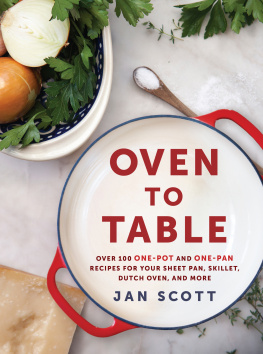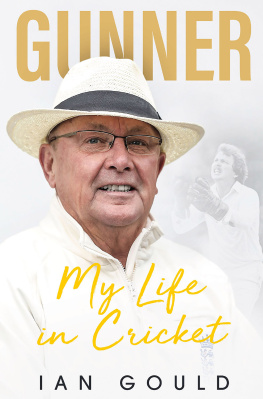
TRANSWORLD PUBLISHERS
6163 Uxbridge Road, London W5 5SA
A Random House Group Company
www.transworldbooks.co.uk
First published in Great Britain
in 2009 by Bantam Press
an imprint of Transworld Publishers
Copyright Les Scott 2009
Les Scott has asserted his right under the Copyright, Designs
and Patents Act 1988 to be identified as the author of this work.
A CIP catalogue record for this book
is available from the British Library.
Version 1.0 Epub ISBN: 9781446423165
ISBN 9780593061466 (cased)
9780593061473 (tpb)
This ebook is copyright material and must not be copied, reproduced, transferred, distributed, leased, licensed or publicly performed or used in any way except as specifically permitted in writing by the publishers, as allowed under the terms and conditions under which it was purchased or as strictly permitted by applicable copyright law. Any unauthorized distribution or use of this text may be a direct infringement of the authors and publishers rights and those responsible may be liable in law accordingly.
Addresses for Random House Group Ltd companies outside the UK
can be found at: www.randomhouse.co.uk
The Random House Group Ltd Reg. No. 954009
About the Book
The world of cricket never fails to produce a wealth of stories, from incredible feats and dreadful performances to the downright bizarre and, lets face it, plain stupid.
In Bats, Balls & Bails: The Essential Cricket Book, renowned anecdote hunter and gatherer Les Scott has collected everything you could possibly want to know about this most sublime of sports and quite certainly a few things that defy belief.
Who was the first player to wear a helmet? When did camels, mackerel and an iguana stop play (not simultaneously, we hasten to add)? What is the origin of the word umpire? Which players were given out for being absent, thought lost on the Tube, thinking he was caught and retired, suffering from measles? When did A. Fielder set a record, and what was so special about L.B.W Forten (think about it!)?
From Fred Trueman trivia to Bradmans batting brilliance, the occasional lack of Grace from the iconic W.G to the belligerence of Botham, Bats, Balls & Bails brings all the great games and characters from cricketing lore to life. In a handy century of sections, with quotes, notes and comprehensive records from counties and minor clubs to international tournaments (not forgetting the KFC Twenty20 Big Bash), it is simply a book no cricket-loving household should be without.
About the Author
Les Scott is a journalist, writer and broadcaster who has collaborated on successful autobiographies with Stanley Matthews, Jimmy Greaves, Tommy Docherty and Fred Trueman, among others, as well as working for national and regional newspapers and in television, film, theatre and radio. He has also recently co-written the Sunday Times bestselling autobiographies by Liverpool footballing legends Tommy Smith and Ian Rush.
Also by Les Scott
End-to-End Stuff: The Essential Football Book
(endtoendstuff.co.uk)
Contents
Acknowledgements
Cricket is a team game: likewise the production of a book. I would like to express my sincere thanks to the following for playing a blinder in this particular team and for making this book far better than it might have been: Julian Alexander and all at literary agents Lucas Alexander Whitley; Ken and Jean Bolam; Andy Boot; all in the PE Department at Chasetown Specialist Sports College; Scott Cordon; Phillip Dann and Dean Statham; Giles Elliott, Doug Young, Vivien Garrett, Dan Balado and all at Transworld Publishers; Matt Hardman; Arthur Montford; Dave and Christine Scott; John Turnock; Mark Williams; Wisden, and every County Championship club.
All records in Bats, Balls & Bails apply, unless otherwise stated, up to and including June 2009.
Authors Note
Back in the sixties the seasons were clearly defined. As soon as the fixtures of the last Saturday of the football season were completed, someone would say, Time to get the cricket bat out! It would never occur to my pals or me to play football in June or July. That would have been akin to setting off fireworks in April, or singing carols in May. We played cricket until the football season started again, but watched the county season to its denouement.
The Durham I grew up in was a Minor County; attendance at a proper cricket match meant going to watch Sunderland in the then Durham Senior League. We envied those boys who had Lords, Trent Bridge or even Grace Road on their doorstep. To us it appeared that cricket, like life, was happening elsewhere. In fact everywhere and anywhere but where we lived.
We played cricket at school, but the real cricket was played in the back lanes of Sunderland, which for the best part of my childhood were of the cobbled variety. These games were played with a proper cricket ball proper in the sense it was a ball of cork, the leather having long since given up the ghost. The meat of the blade of the one bat we possessed was swathed in so much sticky yellow tape it appeared to be wearing a lifebelt, which was appropriate in that we belted the life out of both bat and ball. The bat was hardly from the school of Gunn and Moore: the rubber grip and binding string of the handle had long since perished so one was left holding what amounted to little more than a stick. As for the wicket, that was sponsored: an old orange box donated by the local greengrocer.
No one, of course, possessed pads or gloves. Should todays schoolteachers see boys bearing as many bruises as we did theyd be on the phone to Social Services right away. Back then no one thought anything untoward about a boy splattered with bruises the size of saucers, least of all the boy himself.
Bowling on cobblestones had its moments. Many was the time the bowler delivered the ball only for it to hit a jutting cobble and rebound straight back to him unfailingly a source of much amusement and usually accompanied by cries of Too much back-spin! At junior school we played on a rubber-mat wicket laid on a concrete strip. When I was 11 years old I attended grammar school where I played on my first grass wicket, flummoxed as to why there was no actual grass on it and totally alienated by the talk of my new team-mates about the wicket having pace in it or being conducive to spin.
What sort of wickets have you been used to bowling on? the PE master once asked.
Cobbled ones, I replied.
Oh, yes, replied the master, Ive known groundsmen such as that.
Thats how my great love-affair with cricket began. Like all great romances there was love at first sight, only for a deeper, more meaningful and rewarding love to develop over time. It was a love fostered by my dad and, in particular, my older brother, who spent countless hours bowling to me in our backyard.
Now I spend countless hours bowling to my two young daughters, not in a back lane or backyard, but a back garden. Of course things are different now, rightly and happily so. My daughters benefit from coaching at school, play for their respective school cricket teams and enjoy the use of equipment that would have been beyond the wildest dreams of me and my boyhood pals.
Cricket, particularly at professional level, has changed irrevocably in recent years. The plethora of international matches and competitions; two, often three different touring teams visiting each summer all serve to over-egg the pudding. The money generated will guarantee the future of cricket, but what sort of future will it be?



















